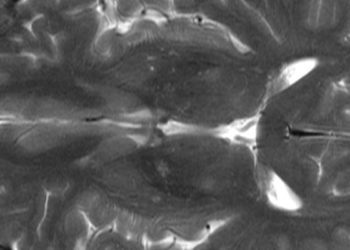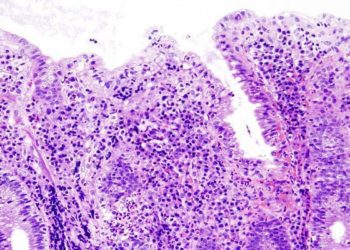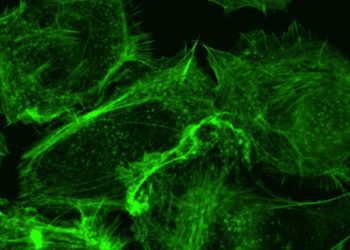Serum S100B may be effective in risk stratifying pediatric head trauma
1. In this randomized clinical trial, the use of serum S100B as the sole method for risk stratifying children following mild head trauma resulted in decreased cranial computed tomography (CCT) imaging and hospitalization compared to the use of pre-established clinical decision-making rules (CDRs).
2. Prolonged hospitalizations, overall hospitalization costs, and the amount of parental leave taken were also lower when using serum S100B protein as the sole determining factor for imaging and hospitalization compared to other CDRs.
Evidence Rating Level: 2 (Good)
Study Rundown: Mild head trauma (HT) constitutes a Glasgow Coma Scale (GCS) score of 13 to 15. It also happens to be a common chief complaint during pediatric emergency visits and accounts for many pediatric hospitalizations. Clinical decision rules surrounding this topic have been designed to reduce exposure to radiation associated with computed tomography (CT) scans and identify children at very low risk for sustaining damage to the brain following HT.
A potential alternative and diagnostic test to CT scanning and admission involves serum S100B protein, a sensitive acute HT biomarker with a short half-life (30-100 minutes). The current randomized trial sought to assess the effectiveness of this blood marker in reducing exposure CT radiation for children at intermediate risk of clinically important brain injury and assess its effectiveness in reducing emergency department and hospital stays.
Overall, this multicentre trial found that children in the control group were more likely to receive a CT scan within 48 hours of minor HT compared to children who received S100B biomonitoring. Children in the control group were also more likely to be hospitalized for monitoring. While there are limitations to this study, it could suggest that the addition of S100B testing to clinical decision making rules for pediatric head trauma could reduce exposures to radiation and hospitalization in this group of individuals.
Click to read the study in JAMA Network Open
In-Depth [randomized controlled trial]: Radiation exposure secondary to cranial computed tomography (CCT) scanning in pediatric populations has been found to be associated with increased risk for cancer. Thus, efforts to reduce unnecessary exposure, particularly after head injuries, is warranted. Clinical decision making rules (CDRs) offer a method of risk stratification for clinically significant brain injury in this population, with options for discharge, CCT imaging, and/or admission for observation in hospital. S100B protein, a sensitive biomarker for acute HT collected through a blood sample, could be used synergistically with these CDRs to enhance risk stratification, which is what this randomized trial sought to study. Main outcomes involved the proportion of children undergoing CCT imaging and hospitalizations for observation. A total of 2078 children aged 16 years or younger admitted to the emergency department with minor HT at 11 centres in France were included. Children randomized to the control group (n = 926) had CCT scans or were hospitalized based on current CDRs, and the other group’s CCT and hospitalization outcomes were based on S100B biomonitoring alone (n = 1152). The S100B biomonitoring group demonstrated significant reductions in hospitalizations (41.6% vs 91.7%; RR, 0.46 [95% CI, 0.39-0.51]; p < .001), long-term (≥ 48 hour) hospitalizations (4.3% vs 5.9%; RR, 0.33 [95% CI, 0.15-0.75]; p = .005), and parental leave taken (5.2% vs 8.2%; RR, 0.50 [95% CI, 0.35-0.70]; p < .001). While 32.3% of control group and only 9.7% of S100B biomonitoring children received CCT scans, the difference was not significant due to intraclass correlations. However, a post-hoc analysis of four of the centres did highlight a significant reduction in the CCT scans given to the S100B biomonitoring group compared to controls (ARR, 0.49 [95% CI, 0.30-0.77]; p = .002). Overall, this randomized clinical trial involved the largest cohort of children to evaluate serum S100B biomonitoring to date, and did demonstrate reductions in CCT scanning, hospitalizations, length of hospitalization, and parental leave required. One obvious limitation to this study was the intraclass correlation, where children in the control group tended to be significantly younger and smaller in size, as well as more reluctant to undergo blood testing compared to older counterparts. However, post-hoc analyses demonstrate a significance to S100B protein testing which should be explored further as it could serve as an adjunct tool in risk stratification and CCT imaging guidelines for this vulnerable population.
Image: PD
©2024 2 Minute Medicine, Inc. All rights reserved. No works may be reproduced without expressed written consent from 2 Minute Medicine, Inc. Inquire about licensing here. No article should be construed as medical advice and is not intended as such by the authors or by 2 Minute Medicine, Inc.








